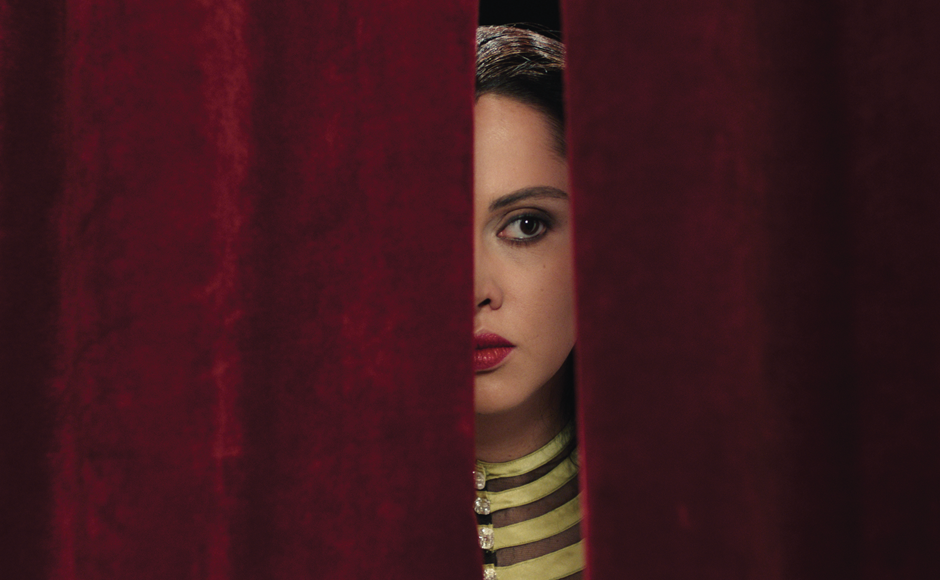Lifestyle
6.25.2021
Divas, a nostalgic walk with the icons of Egypt’s golden age

Within the walls of the Arab World Institute until September 26, Arab music lovers and curious will be able to revisit the history of the great female artists who made the Arab music and cinema of the 20th century through an exhibition that celebrates their history but also the legacy they left behind.
From the very first minutes, the exhibition “Divas, from Oum Kalthoum to Dalida” appears as an invitation to travel. After passing through a curtain on which the faces of mythical female singers of the Arab world are depicted, the visitor is plunged into a small, magical music box, the temple of a journey in four acts, sonorous and lyrical, which transports us from Beirut to Cairo to meet the mythical women of the golden age of music and cinema in the Arab world.
First stop: the feminist pioneers of the Cairo 20’s avant-garde
The first part of the exhibition opens up with the discovery of the buzzing Cairo of the early 20th century. At the height of the “nahda” (intellectual renaissance), the Egyptian capital was the epicenter of a cultural and artistic explosion in the Arab world. A period that also marked the appearance of many women who imposed themselves in the Egyptian artistic landscape. Among them, pioneers of the Egyptian and Arab feminist movement such as Hoda Chaaraoui or Ceza Nabaraoui who founded the Egyptian Feminist Union for the defense of women’s rights, but also forgotten icons such as Mounira Al-Mahdiyya, an icon of the singing café and the operetta, Badia Massabni, one of the first famous oriental dancers and founder of the Basino Badia cabaret, or the actresses and producers Assia Dagher or Aziza Amir who succeeded in defying the Masucline domination by imposing themselves in the emerging industries of record and cinema.

The odyssey continues: great voices of the Arab world and the stars of “Nilwood
These women have laid the foundations of an industry that has allowed the greatest stars of Arab song to emerge, such as Fayrouz, Oum Kalthoum, or Asmahan.
Women of legend and different origins who have all embodied the pan-Arab ideal of the time. The viewer is invited to wander through their bewitching voices and songs, to access the personal dressing rooms of these singers designed as small intimate boudoirs, where their personal belongings, jewelry, photographs, concert posters, stage costumes and exclusive interviews are displayed. An experience made possible by the hard work of the curators of the exhibition Elodie Bouffard and Hanna Boghanim, as explained by the latter “Collecting the personal effects of these divas was the result of a long investigation conducted in Beirut but also in Cairo and Algiers to meet the families of the singers. We had to convince their relatives to lend us these personal objects. If in some cases people generously agreed to bequeath us objects like Warda’s son or the daughter of the designer William Khoury who agreed to lend us Sabah’s dresses, for Fayrouz who no longer accepts to participate in projects, it was very difficult for us to access her personal belongings and we had to reconstitute her dressing room as best we could. Fortunately, on our way there, we were able to meet a collector who has been collecting film posters and magazine covers since he was 15 years old. So we tried to make the most of his collection”.
And as music is never far from the cinema in Egypt, carried out by the successful musicals that made the golden age of its cinema from the 30s to the 70s, this exhibition also pays tribute to the actresses and singers/dancers of “Nilwood” or Hollywood of the Nile. A time when the Misr studios in Cairo produced about fifty films each year and which allowed us to see the apogee of actresses such as Laila Mourad, Souad Hosni, Samie Gamal, Hind Rostom and Dalida.
Leaving nostalgia to look at the future
But far from being a simple nostalgic and melancholic ode to the divas of the Arab world, this exhibition highlights the echo that these women still find today in contemporary production, says Hanna Boghanim “There is a real revival for Arabic nights music in Paris but also in Beirut and Cairo. Many beatmakers are regularly inspired by it in their creation, like Randa Mirza from the duo Love and Revenge for example, and that’s what made us want to explore this history.”
A heritage still alive that the last part of the event highlights through different artists who share their own reinterpretation of this heritage, such as the Egyptian photographer Youssef Nabil who celebrates the belly dance that he fears to see disappear with his short film “I Saved a belly dancer”, or the Lebanese duo formed by Randa mirza and Wadel Kodeih that mixes popular Egyptian songs with holograms dedicated to the figures of the belly dance and Egyptian cinema: Tahiyya Carioca and Samia Gamal in a magic sound installation , but also the Iranian-American artist Shirin Neshat with two short films extract from a film she dedicated to Oum Kalthoum.

Almost a year after the explosion of Beirut, “Divas” inevitably takes us into a dolce vita that we would like to find in the region, even if the curator of the exhibition defends herself from having wanted to plunge us into the abyss of melancholy but on the contrary, show us the hope that this tribute represents, “If the exhibition is a journey in this dreamy period, it doesn’t seek to say that everything is over today, but on the contrary to be part of a continuity and to bring nuance. If women are less represented in Arab films today, there are still feminist movements and this is what the exhibition tries to explain as well.”
See also
Paris : Arab divas unveil themselvespopular

